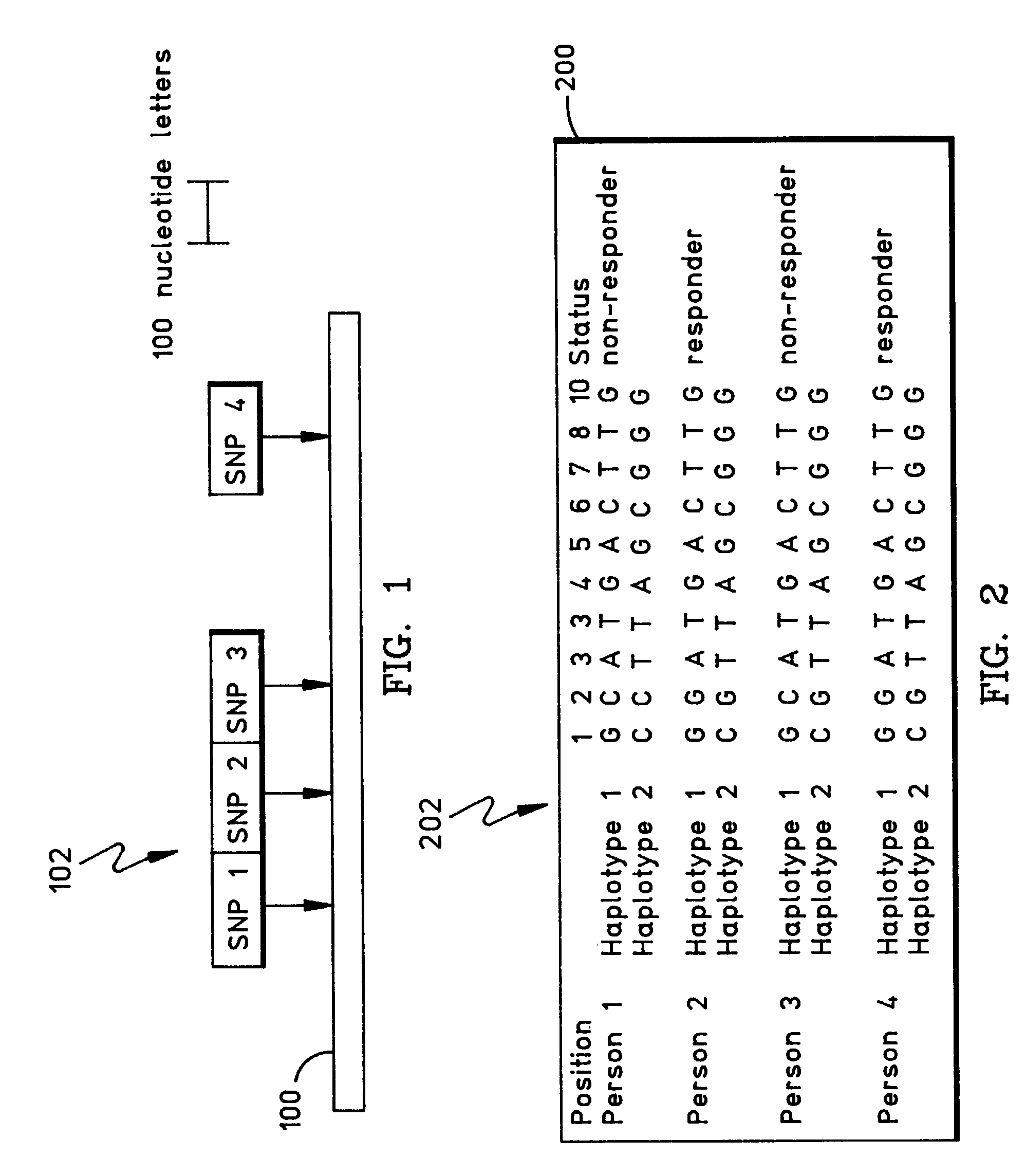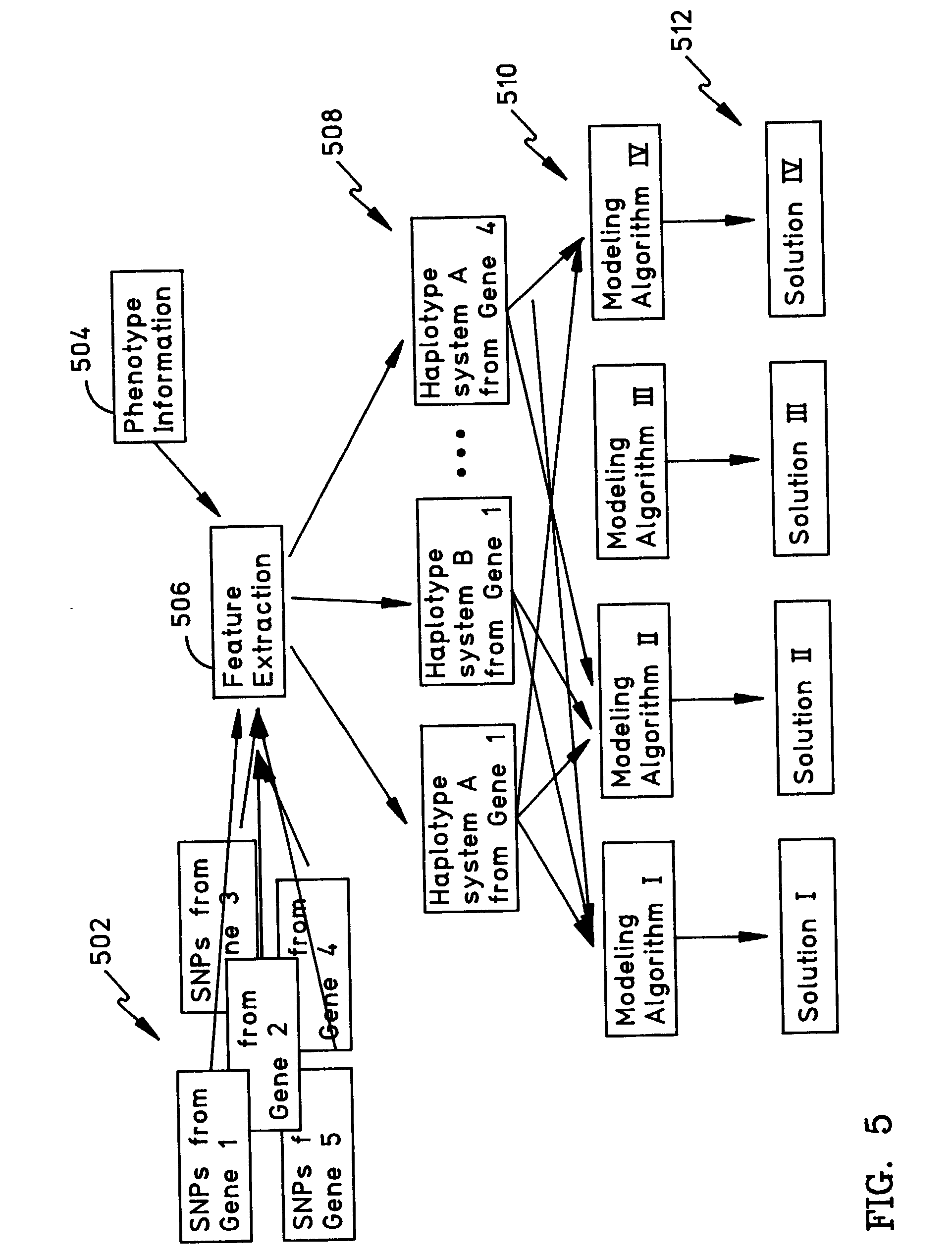Methods for the identification of genetic features for complex genetics classifiers
a genetic feature and classifier technology, applied in the field of genetic feature identification for complex genetics classifiers, can solve the problems of increasing the difficulty of identification, reducing and not working at the level of the gene haplotype, so as to achieve optimal statistical measurement and reduce the number of snp combinations selected and analyzed
- Summary
- Abstract
- Description
- Claims
- Application Information
AI Technical Summary
Benefits of technology
Problems solved by technology
Method used
Image
Examples
Embodiment Construction
[0091]How a patient responds to a drug, and whether they acquire a disease, is a function largely of their genetic background. There is considerable interest in developing genetic solutions for a number of clinically relevant human traits. However, the problem in the field is that most genetics research is conducted on simple genetics terms, and most of the tools available to researchers are simple genetics tools. Most human traits are complex (involving multiple gene sequences) and the simple genetics analysis of complex genomics data rarely yield classifiers that are sensitive or accurate enough to be used for patient classification. The availability of the human genome map allows complex genetic analysis on a scale never before possible, but in order to realize its potential researchers must learn how to study genomics data in complex genetics terms. In the near future, physicians may use patient classifiers to determine whether a patient will respond to one type of medication or...
PUM
| Property | Measurement | Unit |
|---|---|---|
| run time | aaaaa | aaaaa |
| run time | aaaaa | aaaaa |
| degree of freedom | aaaaa | aaaaa |
Abstract
Description
Claims
Application Information
 Login to View More
Login to View More - R&D
- Intellectual Property
- Life Sciences
- Materials
- Tech Scout
- Unparalleled Data Quality
- Higher Quality Content
- 60% Fewer Hallucinations
Browse by: Latest US Patents, China's latest patents, Technical Efficacy Thesaurus, Application Domain, Technology Topic, Popular Technical Reports.
© 2025 PatSnap. All rights reserved.Legal|Privacy policy|Modern Slavery Act Transparency Statement|Sitemap|About US| Contact US: help@patsnap.com



